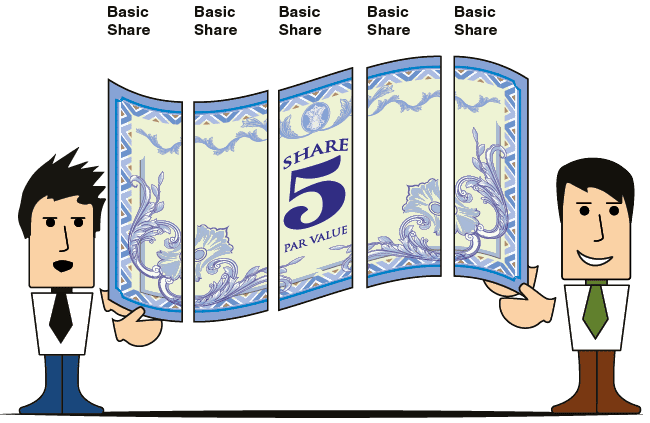A sign at the supermarket that says “Peaches for $2.50” refers specifically to the price of one kilogram of peaches in terms of dollars and cents, and not the price of the entire crate that is on display. Stock exchange prices are expressed in multiples of $0.01. They always refer to the price per share, regardless of the share’s par value.
For example: If a stock market broker says, “I bought 3,000 Microsoft at 550”, it means that he bought 3,000 shares at $5.50 per share. In other words, the shares cost $16,500.
How does the par value of a share affect its price in stock market?
If the voting rights of a $5 PV share (Class B) were equal to those of a $1 share (Class A), then a Class B share would be worth exactly five times as much as a Class A share.
Since Class B shares are inferior, however, and since every $1 of par value grants the shareholder only one vote, then each basic share of Class B stock is actually worth less than one share of Class A stock.
For example, at one time the price of a Class B $5 par value share was $1,360, while a basic 1 par value share cost $290 (while $1,360/5 = $272).
Investors who are more interested in a company’s profits than acquiring voting rights will prefer Class B shares because each basic share is cheaper, while it entitles the holder to the same share of the company’s profits.



